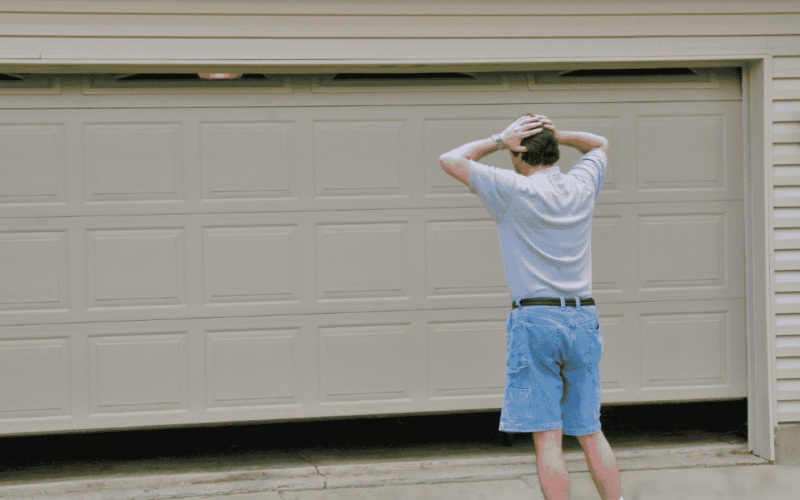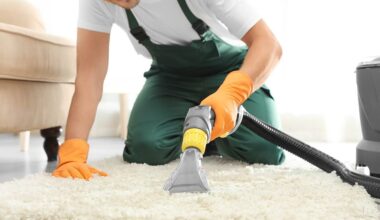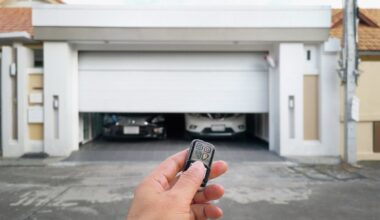There is nothing more frustrating than running into garage door issues. These doors offer safety and security to your house and a space for you to buy a vehicle and store some old cars. A simple DIY can be a great option when you run into a simple repair issue. Compared to professional services, they are more economical. And if you have some experience and tools to do the job on your own, it’s best to get the issue fixed immediately! But do you know that DIY repair can come with various risks? This is why it’s essential to apply safety measures at every step! This is what the article is all about! Here, we will list some safety tips for DIY repair.
Implementing Safety During DIY Garage Door Repair
We understand the situation of your garage door not opening and closing after a long day! There are a few tips and tricks on fundamental garage door maintenance and steps to fix your garage door to keep any issues from happening firsthand. We are not asking you to be a hero and do all the renovation work independently. You must attempt the repair only if the issues seem simple! There have been cases of injury during DIY repair. That is why you need to consider safety. With plenty of safety tips and tricks for garage doors and glazed windows, you can be assured of DIY garage door repair and for glazed windows, you can also hire a failed double glazing repair specialist.
Tip 1: Wipe Off the Garage Door Sensors
In case your garage door doesn’t open or close, and you’re in a hurry to reach out to a professional garage door service, it’s an excellent first step to try changing the door battery on the remote. In many cases, the remote might have run out of the batter. If that doesn’t work, you should check the electric eye sensor right at the bottom of the door. Usually, the dirt, debris, and oil can build up on the sensors over time, causing a communication problem and leading to the issues of the garage door not opening right away. If the lenses appear dirty, you can wipe them off with a microfiber cloth. If they are out of alignment, try straightening them. You can be surprised how a small DIY garage repair trick can quickly solve the issue!
Tip 2: Tighten the Nuts, Bolts and Hinges
In many cases, the loosening of the nuts, bolts, and hinges might also stop the garage door from working. These loose nuts, bolts, and hinges also depict the danger! Garage doors are loud; you should check the door hardware to see if it is making more noise than usual. Shortening the nuts, bolts, and hinges can help avoid the garage door repair issue in the first place. With the weather change and the temperature fluctuations, the metal in these tools tends to expand and contract, losing the door over time. Once you tighten all the bots and fasten the rails, the garage door might function properly like before. Also, check for signs of wear on the roller brackets. We don’t suggest removing the lower roller bracket – as it’s attached to a high-tension cable and can have a risk associated with it. It’s best to call a garage door service if the part needs to be removed. Otherwise, you can tighten these tools independently and see if the garage door opens and shuts properly.
Tip 3: Lubricate the Moving Parts
Over time, the parts of your garage door are likely to make noise that sounds loud, squealing, squeaking, or shrieking. This is the sign that you have to lubricate these parts. It is a great repair tip to do at least once a year. It ensures that everything moves appropriately. It’s suggested that a lithium-based garage door lubricant be used. They are available in a spray can. You can apply the oil to all the moving parts, like the hinges and the bend of the track. But, when lubricating, you must be aware of the factors you can grease and those you can’t! For example, nylon rollers shouldn’t be lubricated! But, if you have metal rollers, you can lubricate them. Further, it’s suggested that the springs be located and lubricated thoroughly. These moving parts can collect dirt and debris over time, causing difficulty in the opening and closing of the garage door. Upon lubricating the part, you ensure the tool is around to open and close the garage door quickly.
Tip 4: Clean the Track
Another DIY garage door repair is checking the garage door tracks for debris and ensuring they are clean. It’s somewhat like your garage door maintenance. But this could also be a solution if your garage door doesn’t open. We suggest using an automatic brake cleaner to clean the tracks. To avoid any injury, it’s best to do it when the garage doors are closed. Make sure you lock the garage door before starting the cleaning process.
Tip 5: Repair the Weather Seal
Weather changes have been evident over the years. It’s a good idea to change the weather seal once in a few years to ensure no leakage under your garage doors. Most garage doors have a U-shaped astragal, which tends to get damaged from normal wear and tear. The wider the gap under your door, the larger the astragal. You can easily purchase these parts from your local hardware. You can repair these seals or replace them if they are completely damaged.
Conclusion
This summarizes our article on the best DIY garage door repair and maintenance. Here, we listed some practical strategies and methods to ensure the repair of the garage door with safety in mind. Further, we also listed some maintenance tips to ensure your garage door functions smoothly without causing any trouble. Garage doors are an integral part of your home and are highly important. They ensure safety, provide a secure parking space, and store extra things. When you have garage door issues, try these DIY methods to see if they work!
In this case, the issue seems severe and something you need to learn about; we suggest contacting a professional service provider. They can help you better tackle the problem, ensuring the safety factor. Rest assured, these DIY tips can help you quickly tackle the issue in urgent cases and get your door working immediately.


